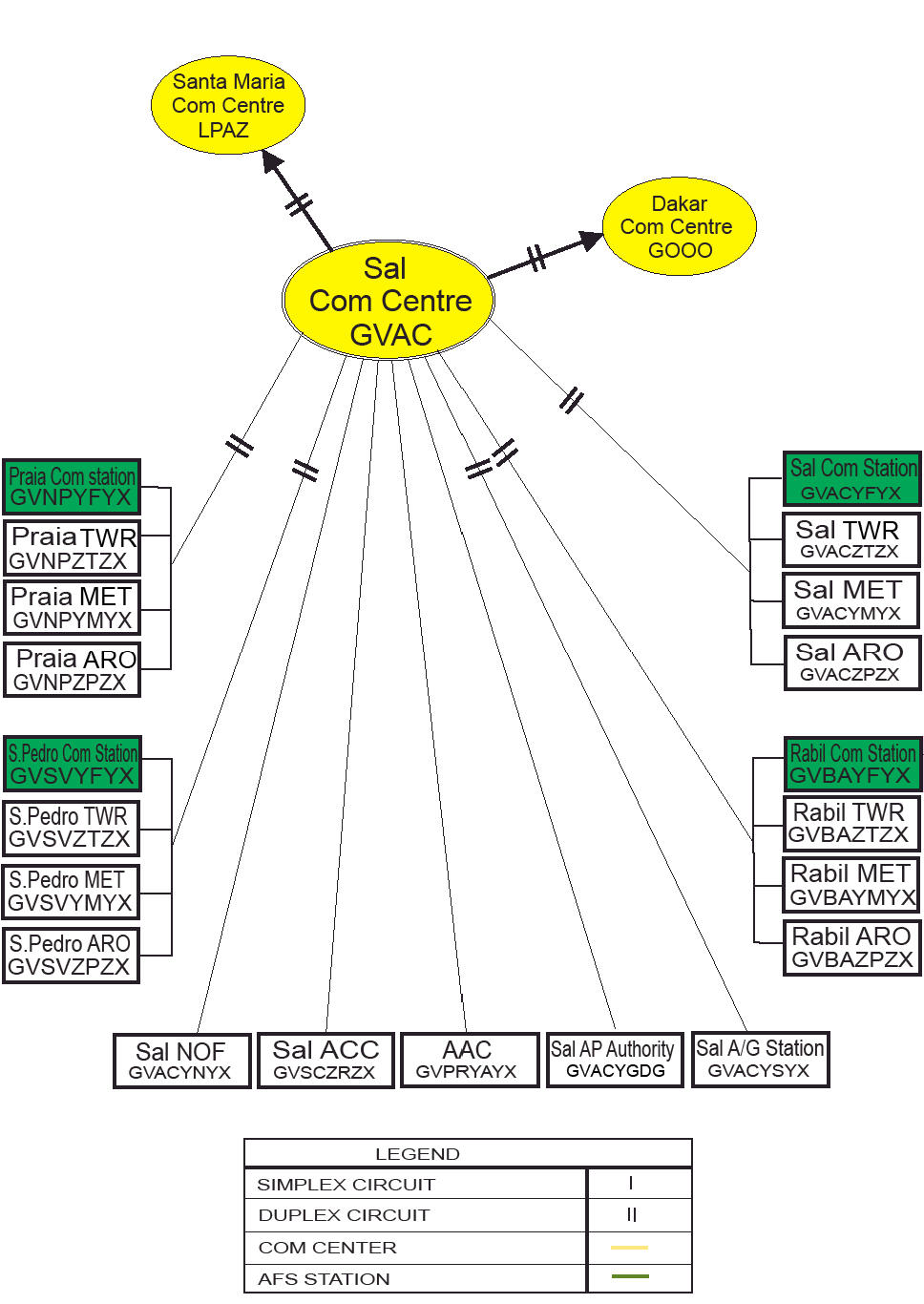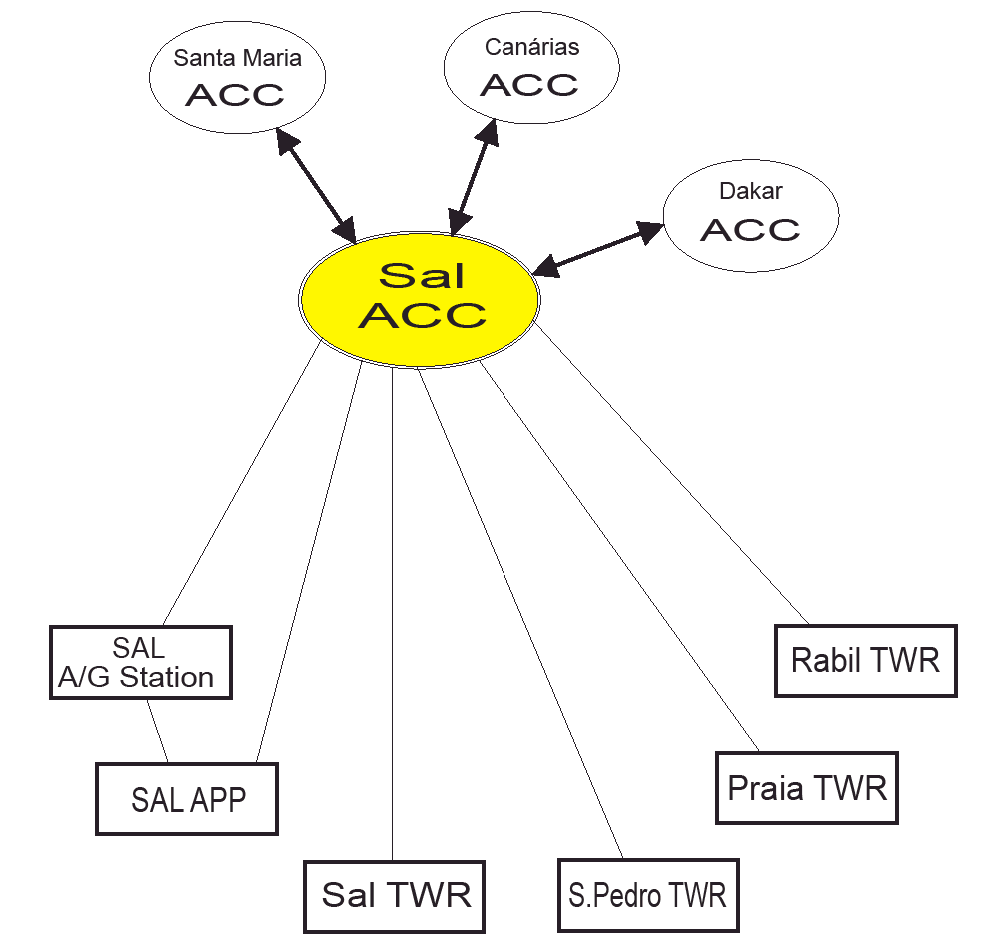GEN 3.4 COMMUNICATION AND NAVIGATION SERVICES
3.4.1. Responsible Service
ASA - Aeroportos e Seguranca Aerea - S.A.
Communication, Surveillance and Navigation Service (SCVN)
Aeroporto Amilcar Cabral
Espargos
Sal Island
Republic of Cabo Verde
Tel: +238 2419200
Fax: +238 2413336
Email: NIL
AFS: GVACDNAX
URL: NIL
-
Annex 10 - Aeronautical Telecommunications
-
DOC 8400 - Procedures for Air Traffic Navigation Services - ICAO Abbreviations and Codes (PANS - ABC)
-
DOC 8585 - Designators for Aircraft Operating Agencies, Aeronautical Authorities and Services
-
DOC 7030 - Regional Supplementary Procedures
-
DOC 7910 - Location Indicators
Note: Differences to this provision are detailed in subsection GEN 1.7.
3.4.2. Area of responsibility
3.4.3. Type of service
3.4.3.1 Radio navigation services
The following types of radio aids to navigation are available:
-
LF / MF Non - directional Beacon (NDB)
-
Instrument Landing System (ILS)
-
VHF Omni directional Radio Range (VOR)
-
Distance - Measuring Equipment (DME)
-
Approach and Regional Control Radar
3.4.3.2 Voice and & or data link services
3.4.3.2.1 Mobile service
The aeronautical stations maintain a continuous watch on their stated frequencies during the published hours of service unless otherwise notified.
An aircraft should normally communicate with the air / ground control radio station that exercises control in the area in which the aircraft is flying. Aircraft should maintain a continuous watch on the appropriate frequency of the control station and should not abandon watch, except in an emergency, without informing the control radio station.
3.4.3.2.2 Fixed service
The messages to be transmitted over the Aeronautical Fixed Service (AFS) are accepted only if:
-
They satisfy the requirements of ICAO Annex 10, Vol II, Chap. 3.3.3
-
They are prepared in the form specified in ICAO Annex 10
-
The text of an individual message does not exceed 200 groups
Note: General aircraft operating messages, designated as Class B2, are not acceptable.
3.4.3.3 Broadcasting service
NIL
3.4.3.4 Language used
English and Portuguese
3.4.3.5 Where detailed information can be obtained
Details of the various facilities available at the individual aerodromes can be found in the relevant sections of Part 3 (AD). In cases where a facility is serving both the en - route traffic and the aerodromes, details are given in the relevant sections of Part 2 (ENR) and Part 3 (AD).
3.4.4. Requirements and conditions
NIL
3.4.5. Miscellaneous
See following figures of AFTN circuit network.
Aeronautical Fixed Services (Telegraph)

Aeronautical Fixed Services (Telephone)
